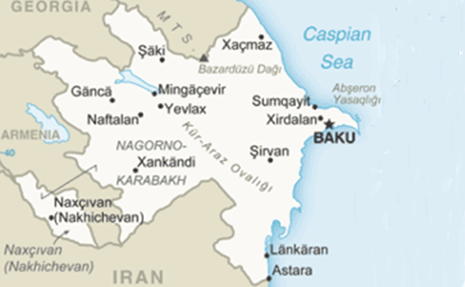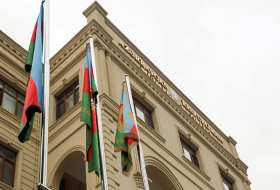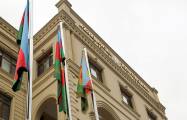In May 2000, the initiative to develop the “Central Asian Productivity Research Center” (CAPRC) was proposed by Professor Harry C. Lepinske and Professor Jamaluddin Hussain of Purdue University Calumet to academia, government officials and business leaders in Turkey and Nakhchivan, Azerbaijan. The initial goals were to concentrate on the needs for economic development in Eurasia and the Caucasus Regions. Working quickly, in cooperation with a small group of volunteers, the concept spread throughout the region. In January 2001, the concept of this strategic alliance was solidified, and the program moved forward. The initial focus for CAPRC was to operate as a strategic alliance assisting with economic development programs within the region. Today as a mature respected international project, it continues to expand its primary focus.
This year in May 16, 2014 the 9th Annual Silk Road Conference took place at the Kent College of Law Illinois Institute of Technology at Chicago, Illinois organized by CAPRC and Northern Illinois University with the support of Azerbaijan Export and Investment Promotion Foundation (AZPROMO), Silk Way Airlines, Turkish Airlines and Hacetepe University of Turkey. Many guest speakers, diplomats, professors, government leaders and others from the former Silk Road countries, USA and Europe attended the conference. Azerbaijan was represented at the conference by Mr. Natig Bakhshiyev (Embassy of Azerbaijan, USA), Mr. Basrad Pashayev (Entrepreneur/Energy Analyst), Mr. Elshan Baloglanov (AZPROMO) and Professor Elbrus Isayev (Nakhchivan State University).
Other Silk Road countries at the conference were represented by Mr. Kairat Umarov, Kazakhstan Ambassador to the USA, Mr. Bakhtiyar Gulyamov, Uzbekistan Ambassador to the USA, Mr. Ahmad Zahir Farqiri, Minister and Deputy Chief of Mission, Embassy of Afghanistan, Washington, D.C, Mr. Faisal Niaz Tirmizi, Consul General of Pakistan, Chicago, Pulod Amirbekov, Director Promotion-Marketing, Dushanbe, Tajikistan, Mr. Fatih Yildiz, Consul General Consulate General of The Republic of Turkey, Professor Dr. Ozlem Atay Department of Management, Ankara University, Turkey, Dr. Ishaq Nadiri Distinguished Professor of Economics, New York University, Senior Economic Advisor to Afghanistan’s President Karzai.
Among other guests were: US Representatives of Azerbaijan Silk Way Airlines and Turkish Airlines, high level officials of the US Department of State (DoS), Defense Logistics Agency (DLA) and U.S. Transportation Command (TRANSCOM).
The conference focused on energy security issues, strategic importance of Azerbaijan for Caspian region, as well as geopolitical situation in Central Asia and the Silk Road region and highlighted the region`s expanding economic development, its growing business opportunities and importance to the global economy. The US-Azerbaijan relations also were discussed during the event.
THE GREAT SILK ROAD and AZERBAIJAN
“Great Silk Road” is a general name of a caravan road, which has been the main two-way trading bridge of East and West since III century BC up to now, living its flourishing period in the XV century. It facilitated exchange of cultural, scientific, educational and religious values by traders and pilgrimages.
The Great Silk Road starts in Japan and China stretches up to Europe cutting through India, Afghanistan, Iran, Central Asia, Caucasus, Asia Minor, Northern Africa including/connecting Indian Ocean, Chinese sea, Japanese sea, Red sea, Caspian sea, Black sea, Azov sea and Mediterranean sea. The Great Silk Road was named after the main trade item-silk, which until VI century of our era was manufactured only in China. The whole length of the main high way is more than 7 thousand kilometers. Nakhchivan and in general Azerbaijan has played an important role in the whole route for centuries.
The extremely favorable location of Caucasus-juncture point of Asia and Europe, between Mediterranean, Caspian, Black and Azov seas was very attractive for world in the ancient times. That’s why being an inherent, compound part of Caucasus, Azerbaijan played a remarkable role in international relations and trade, exchange of cultural values and ideas between countries and nations. The territory of historical Azerbaijan was 320,000 km2. It started from Darband in the north and stretched up to Hamadan in the south, from Caspian Sea in the east up to Asia Minor and Georgia in the west. Russian and Iran empires waged wars over Caucasus, including Azerbaijan lasting hundreds of years, which ended with division of Azerbaijan in two parts in the beginning of the 19th century. Northern Azerbaijan (now Azerbaijan Republic) and Southern Azerbaijan (now a part of Iran Islam Republic) emerged since then.
Darband, Baku, Ganja, Shamakhi, Tabriz, Sheki, Nakhchivan, Maraga, Hamadan, Julfa, Barda and Ordubad are the key cities which located on the Great Silk Road.
As in XXI Century – era of globalization in history, the economic potential and power of every state is measured also by its transport-communicational complex. It is impossible to speak on the dynamic growth of any state not having road-transportation network with wide and many-branched, perfect infrastructure under modern standards. From this point of view, the comprehensive activities carried out in the field of realizing the idea to restore Historical Silk Road has further intensified geostrategic and geographical importance of Azerbaijan.
According to project plans, the new Great Silk Road will pass by marine vehicles of Azerbaijan, starting from Japan through the areas of China, Middle East, Caspian Sea and Baku is considered to be a large seaport (located )situated on this road.
Recently-restored, the Silk Road does not consist of only highways, but also has attained new contents like Silk railroad, Silk marine road, Silk energy road, Silk fiber-optic road, Silk Road of cultures, etc.
Implementation of this important project of XXI Century is the result of hard and wide activity and determination of national leader Heydar Aliyev. By opening EU representation of TACIS (Technical Assistance for the Commonwealth of Independent States) in Baku at the end of 1993, the process has started to rebuild all spheres of Azerbaijan economy on the European model. During the summit of the European Union in Brussels in May of that year within the frame of this program, TRACECA (Transport Corridor Europe-Caucasus-Asia) was adopted which was being implemented in comply with the contract signed with the countries of Middle East and republics of the South Caucasus.
TRACECA project – Europe-Caucasus-Asia transport corridor was considered to join transport networks of the Caucasus region and states of Central Asia and to render advisable services for transportation. As a result of debate conclusion, two official documents “Brussels statement” were signed and it was decided to restore old East-West “Silk Road” corridor under new circumstances, to re-build and reinforce transport-communicational infrastructures.
Constituting very important part of this road, Azerbaijan chose a strategy of open economic policy towards the countries from all over the world, thereupon, estimation and corroboration of Azerbaijan as a serious partner in economy opened such a perspective that Azerbaijan took one of the central positions on the trade road to be restored.
Many preferences of the region, especially, important geographical location of Azerbaijan, its position in an area where the trade roads crossing Black Sea and Caspian Sea, Russia and Iran, are merged, its rich historical and cultural heritage are the main factors which invoke the leading role of Azerbaijan in newly-established international highway.
Leading position of Azerbaijan playing a role of “bridge” between East and West in the development of Europe-Caucasus-Asia transport corridor serves to further increase the integration of the country with the countries from all over the world. And in its turn, this is of vital importance for not only economically, but also from the point of view of political tranquility and security.
NAKHCHIVAN and its contribution to THE GREAT SILK ROAD
One of the areas passed through the Great Silk Road and which historically, has been playing irreplaceable role in the realization of economic, commercial and cultural relationship among many countries and peoples is the territory of Nakhchivan that is regarded to have been an important station between east and west and one of the developed cultural, commercial and handicraft centers of Azerbaijan since ancient times. Nakhchivan was an important Azerbaijani city on the Silk Road.
The first written information about Nakhchivan has been found in Greek geographer Claudius Ptolemy’s book, “Geography”. He wrote that “Naksuana” is the center of the vast country. Turkish traveler Evliya Chalabi (1611-1682) believed that the town was founded by the king Afrasiyab, the legendary ruler of Turan. This city was looted by the Byzantine emperor Heraclius the Second in the first century AD. A geographical book in early thirteenth century, entitled “Ajaib ad-Dunya” (“Rarities of the World”), writes: “Nakhchivan is a big town in Azerbaijan with a large population. The French traveler Wilhelm de Rubruck (1220-1293), who visited Nakhchivan, said that it was a large and beautiful capital of a large country until the Mongolian invasion. It suffered serious damage during attacks by the armies of Chinghis Khan in 1221. Hamdallah Qazvini, a historian and geographer, mentioned Nakhchivan in his book on geography entitled “Nuzhat al-Qulub” (“The Delight of Hearts”). He said: “It is a very beautiful location. It is called “Naqshi-Jahan”. There are several large fortresses near the town. Yaqut al-Hamavi, another geographer who lived in the thirteenth century, wrote: “The town of Nashava is in Azerbaijan. Ordinary people call it Nakhchuan. In the twelfth century, Nakhchivan had a population of 200,000. It was a capital of the state of Atabeys of Azerbaijan dynasty) – a new state founded on the basis of independent atabeylik during the demise of the Seljuks. This powerful feudal state, ruled by the Eldaniz dynasty, existed between 1136 and 1225. Nakhchivan was the capital of the state of Eldaniz in the mid twelfth century. In this period, the town developed into a major commercial and trade center of the state of Atabeys. The rapidly growing town, which was the capital of the state between 1136 and 1175, was of economic and military importance.
One of the main caravan roads joining the commercial centers of Near East with the countries of the South Caucasus, Middle East and Far East passed through the territory of Nakhchivan.
It is not accidental that the principal factors of creation of Nakhchivan city – one of the old centers of urban culture was connected with local geographic, economic and cultural grounds.
Trade had developed here during the middle Ages. The town was known for its craftsmen: potters, jewelers and glass makers. Construction had flourished here even more. According to travelers who were fascinated by the beautify of the town, in the medieval period Nakhchivan had palace compounds of the Eldaniz rulers, a Friday mosque, a madrasah (which had turned into a center of Islamic teaching), state buildings and palaces of royal family members. The Turkish traveler Evliya Chalabi (1611-1682) spoke about local baths where the water of swimming pools was flavored with a basket of rose each day. Talented handicraftsmen in Nakhchivan offered foreign merchants a great variety of useful goods – graceful jewelry, wind and string musical instruments, magnificent carpets, local sorts of silk and etc. The merchants took jewelry, salt, mercury, alum, wool, flax, cotton, mineral dyes, medicines and many other things out from there. Copper items were especially famous: kitchen ware, trays, and candlesticks. Fruitful geographical location, rich natural resources of Nakhchivan and important role played by town in the life of the country for centuries has granted its redevelopment.
Samples of material culture obtained during archaeological excavations prove that Nakhchivan region was one of the areas of primary urban culture. Undoubtedly, new towns were also being appeared in these territories over time though the first town in the explored region was Nakhchivan city. Among those towns, Nakhchivan, Ordubad, Azad, Gilan and Garabaghlar were especially, different. Researches and current geographical location of the towns also prove that these towns were located on important trade roads passing through the area. Though some of these towns became commercial and handicraft centers after the creation, the role of trade roads passing by the area of towns was important in the creation of some other towns. As to the information by ancient and medieval authors, towns were especially, created on trade roads passing by the area and they developed as commercial and handicraft centers. During the archaeological excavations held in the residences and tombstones situated on this road, a lot of tools brought from other countries (money, jewelry, weapons, stamps, metal and clay pots, ivory, figures from colored stones and so on) were found.
In ancient time Salt was also one of the symbols of Nakhchivan. Its natural resources make 90 million tons. The Salt Mountain being the only one in the world was famous both for its pure salt and healing peculiarities. They say that the salt was extracted here 6 thousand years ago. Before world-wide known “Silk Road” there was “Salt Road” extending from Nakhchivan to the countries of Middle East.
Famous rock salt of Nakhchivan was carried by “Salt roads” to different countries of the world.
In XX Century, imperialist interests on the region and Armenia’s occupational intentions separated Nakhchivan from the motherland by occupying historical Azerbaijan lands. Today the territory of Nakhchivan surrounded by Armenia from three sides, is under the blockade. Despite the hard conditions of blockade, there is a great development in the city. The major contribution of New Silk Road to Nakhchivan without any land connection with Azerbaijan is the Baku-Tbilisi-Kars-Nakhchivan railroad project. Somehow, the implementation of this project will set the area free from blockade dependence lasted for long years.
As said above, Nakhchivan is one of the most important parts of the Great Silk Road and it is an undeniable fact that it was considered the most ancient city and cultural center of the East considering the geographical, economic and cultural backgrounds. Formation of Julfa, Gilan, Garabaglar and Ordubad in the region and their turning into art and trade centers over the international caravan roads gave Nakhchivan recognition as one of the important cultural centers not only in Azerbaijan, but also in the Near East.
Read here: https://azvision.az/redirect.php?url=http://www.eurasiareview.com/25122014-azerbaijan-great-silk-road-importance-nakhchivan-oped/
More about:
















































